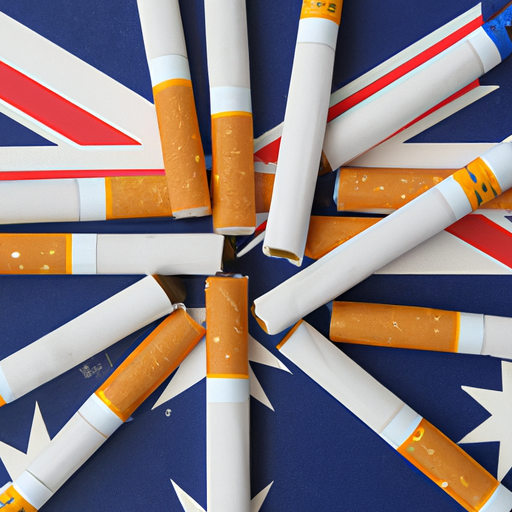
Cigarettes are no doubt a controversial topic in Australia. As a smoker, I have firsthand experience of the strict regulations and high costs associated with smoking in this country. However, I also understand the dangers and health risks associated with it. In this article, I will provide a comprehensive overview of the current state of cigarettes in Australia, covering aspects such as government policies, smoking rates, and the tobacco industry.
The tobacco industry in Australia has a long history, dating back to the early 19th century when British colonizers introduced the crop to the continent. The demand for tobacco grew rapidly, and by the end of the 19th century, Australia had become an important global player in the trading of tobacco. In the 20th century, smoking became increasingly popular among Australians, with the peak in the 1960s and 1970s when about 50% of the population smoked. However, in recent years, there has been a significant decline in smoking rates, with currently only 13% of the population being regular smokers.
The decline in smoking rates can be attributed to the various government policies and regulations that have been put in place to discourage smoking in Australia. The most significant of these is the introduction of plain packaging in 2012, which requires all tobacco products to be sold in nondescript, olive green packets with graphic health warnings. This has been heavily criticized by the tobacco industry, which claims that it violates their intellectual property rights. However, a study conducted by the Australian government found that plain packaging has indeed reduced smoking rates, with an estimated 108,228 people quitting smoking as a result.
In addition to plain packaging, the Australian government has also implemented high taxes on cigarettes. The price of cigarettes in Australia is among the highest in the world, with a pack of 20 cigarettes costing an average of $35 AUD. This is mainly due to the high taxes imposed, with the government aiming to discourage young people from taking up smoking and to increase revenue for anti-smoking campaigns. While this has been effective in reducing smoking rates, it has also led to an increase in the sale of black market cigarettes, which can be cheaper and more easily accessible to young people.
Another significant government policy in relation to cigarettes is the ban on smoking in public areas. This includes all indoor spaces, such as restaurants, bars, and offices, as well as outdoor areas such as playgrounds, sporting grounds, and beaches. This has been a controversial issue, with non-smokers applauding the ban while smokers feel their right to smoke has been infringed upon. However, research has shown that the ban has had a positive impact on public health, reducing exposure to secondhand smoke and encouraging smokers to quit.
Despite these strict regulations, the tobacco industry in Australia continues to thrive, generating billions of dollars in revenue annually. This is mainly due to the export of tobacco products, with Australia being the largest supplier of loose tobacco and the second-largest supplier of cigarettes to New Zealand. In addition, the industry also heavily markets e-cigarettes, which have been gaining popularity in recent years. While e-cigarettes are not yet regulated in Australia, the government is considering legislation to ban their sale to minors and regulate their marketing.
In conclusion, cigarettes in Australia are heavily regulated, with strict policies and high costs aimed at reducing smoking rates and promoting public health. While some people argue that these measures are infringing upon individual rights, the positive impact on public health cannot be ignored. As a smoker, I understand the desire to smoke and the difficulties in quitting, but it is important to be aware of the risks and consequences. If you are a smoker looking to quit, numerous resources and support systems are available, such as the cigarettes australia, which offers comprehensive information and assistance to help you on your journey to a smoke-free life.